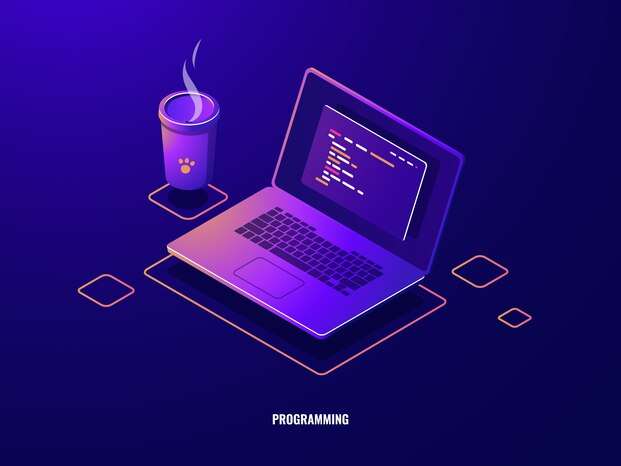
Introduction to JavaScript Loop through Object :
IF you are looking for JavaScript Loop through Object then you ae on right place .In JavaScript, objects are a fundamental data structure that allows you to store key-value pairs. Objects can contain various types of data, including strings, numbers, arrays, and even other objects. When you want to iterate through the properties of an object, you can use different techniques like for...in loops, Object.keys(), Object.values(), and Object.entries() and this will help you to understand how JavaScript Loop through Object .
Table of Contents
Using for…in Loop:
One of the common ways to loop through the properties of an object is by using a for...in loop. This loop iterates over all enumerable properties of an object, including those inherited through the prototype chain. Here’s an example:
Code:
let person = {
name: 'John',
age: 30,
city: 'New York'
};
for (let key in person) {
console.log(key + ': ' + person[key]);
}This loop will output:
name: John
age: 30
city: New YorkObject.keys(), Object.values(), and Object.entries() Methods:
JavaScript provides methods such as Object.keys(), Object.values(), and Object.entries() that allow you to extract specific information from an object.
Object.keys() returns an array containing all the keys of the object:
CODE:
let keys = Object.keys(person);
console.log(keys); // Output: ["name", "age", "city"]Object.values() returns an array containing all the values of the object:
let values = Object.values(person);
console.log(values); // Output: ["John", 30, "New York"]Object.entries() returns an array of arrays, each inner array containing a key-value pair:
let entries = Object.entries(person);
console.log(entries);
// Output: [["name", "John"], ["age", 30], ["city", "New York"]]Iterating Through Object Properties:
When looping through objects, it’s important to consider how to handle inherited properties from the prototype chain. You can use hasOwnProperty() to check if the property belongs directly to the object and not inherited:
for (let key in person) {
if (person.hasOwnProperty(key)) {
console.log(key + ': ' + person[key]);
}
}This ensures that only the object’s own properties are logged and this will help you to understand how JavaScript Loop through Object .
Deep Dive into Object Iteration:
When working with complex data structures or nested objects, iterating through them becomes more intricate. Consider an example with a nested object:
CODE:
let employee = {
name: 'Alice',
age: 28,
department: 'IT',
contact: {
email: 'alice@example.com',
phone: '123-456-7890'
}
};To access and iterate through the nested object properties, you can use combinations of loops or methods:
for (let key in employee) {
if (typeof employee[key] === 'object' && employee[key] !== null) {
for (let nestedKey in employee[key]) {
console.log(nestedKey + ': ' + employee[key][nestedKey]);
}
} else {
console.log(key + ': ' + employee[key]);
}
}This code will output:
name: Alice
age: 28
department: IT
email: alice@example.com
phone: 123-456-7890It checks if the property is an object and then iterates through its properties if it is. This technique is handy for handling nested structures and this will help you to understand how JavaScript Loop through Object .
Using Object.entries() with Destructuring:
ES6 introduced destructuring, allowing for a cleaner syntax when working with arrays or objects. Combining Object.entries() with destructuring makes it more concise to access key-value pairs:
for (const [key, value] of Object.entries(employee)) {
if (typeof value === 'object' && value !== null) {
for (const [nestedKey, nestedValue] of Object.entries(value)) {
console.log(nestedKey + ': ' + nestedValue);
}
} else {
console.log(key + ': ' + value);
}
}This accomplishes the same result as the previous example but uses destructuring to directly access key-value pairs within the loop and this will help you to understand how JavaScript Loop through Object .
Filtering and Manipulating Object Properties:
There might be scenarios where you need to filter or manipulate object properties during iteration. For instance, filtering out properties based on certain conditions:
let product = {
name: 'Smartphone',
price: 499,
stock: 20,
discount: 0.1
};
for (let key in product) {
if (typeof product[key] === 'number') {
if (product[key] > 100) {
console.log(key + ': ' + product[key]);
}
}
}This code snippet logs properties with numerical values over 100:
price: 499
stock: 20Functional Programming with Object Iteration:
With the rise of functional programming in JavaScript, methods like map(), filter(), and reduce() can be utilized in combination with object iteration methods for more elegant and concise code:
const sales = {
apple: 10,
orange: 15,
banana: 8,
mango: 20
};
const totalFruitSold = Object.values(sales).reduce((acc, curr) => acc + curr, 0);
console.log('Total fruits sold:', totalFruitSold);This example uses Object.values() to extract the values from the sales object and reduce() to calculate the total number of fruits sold and this helps you to understand JavaScript Loop through Object.
Conclusion:

If you want to master on JavaScript Loop through Object then this article helps you a lot . Mastering object iteration in JavaScript empowers developers to efficiently navigate and manipulate data structures. Whether it’s handling nested objects, applying functional programming paradigms, or filtering/manipulating properties, understanding these techniques enables cleaner and more effective code and helps you to understand JavaScript Loop through Object.. By leveraging a combination of methods and loops, developers can traverse and manipulate objects to suit various application requirements and this will help you to understand how JavaScript Loop through Object .
Frequently Asked Questions:

Here are ten frequently asked questions (FAQs) about looping through objects in JavaScript:
1.What is the best method for looping through object properties in JavaScript?
- The best method depends on the specific use case.
for...inloops,Object.keys(),Object.values(), andObject.entries()each have their advantages. Choose based on the need to access keys, values, or both, and consider performance implications.
2.How do you loop through nested objects efficiently?
- To iterate through nested objects, combine loops or methods like
for...inwith conditional checks to handle nested properties. Alternatively, useObject.entries()with nested destructuring for a more concise approach and this will help you to understand how JavaScript Loop through Object .
3.Can you filter object properties while looping through them?
- Yes, you can filter properties based on conditions by using if statements within loops. Check the property values against certain criteria and log or manipulate them accordingly.
4.What’s the difference between for...in and Object.keys() when looping through objects?
for...inloops iterate through all enumerable properties of an object, including inherited ones, whileObject.keys()returns an array containing only the keys of an object, excluding inherited properties and this will help you to understand how JavaScript Loop through Object .
5.How do you avoid iterating over inherited properties in JavaScript?
- Use the
hasOwnProperty()method within afor...inloop to ensure that only the object’s own properties are processed and not those inherited from the prototype chain.
6.Can you use functional programming methods like map() or reduce() with object iteration?
- Yes, functional programming methods can be combined with object iteration methods like
Object.keys(),Object.values(), orObject.entries()to perform various operations on object properties more elegantly and concisely.
7.Is there a preferred way to iterate through object properties for better performance?
for...inloops might be less performant for large objects. UsingObject.keys(),Object.values(), orObject.entries()to create arrays of keys, values, or key-value pairs and then iterating over those arrays can offer better performance.
8.Can I modify object properties while looping through them?
- Yes, you can modify object properties while looping through them. However, take care when doing so, as it might affect the loop’s behavior and lead to unexpected results and helps you to understand JavaScript Loop through Object.
9.How do you handle errors or non-existent properties during object iteration?
- To avoid errors when accessing non-existent properties, use conditional checks like
hasOwnProperty()or check if the property is defined before accessing it to ensure safe iteration.
10.Which method is recommended for accessing both keys and values of an object simultaneously?
These FAQs cover common queries and considerations when working with object iteration in JavaScript, offering guidance on various methods, performance, handling nested objects, and more.
Informative
Informative
Informative
Informative
Informative
Informative
Good
Informative
Informative
Good
Good work
Hello
I’m web developer
I am glad to be a visitant of this unadulterated website! , thanks for this rare info ! .
It is the best time to make some plans for the future and it is time to be happy. I’ve read this post and if I could I desire to suggest you few interesting things or tips. Perhaps you can write next articles referring to this article. I desire to read more things about it!